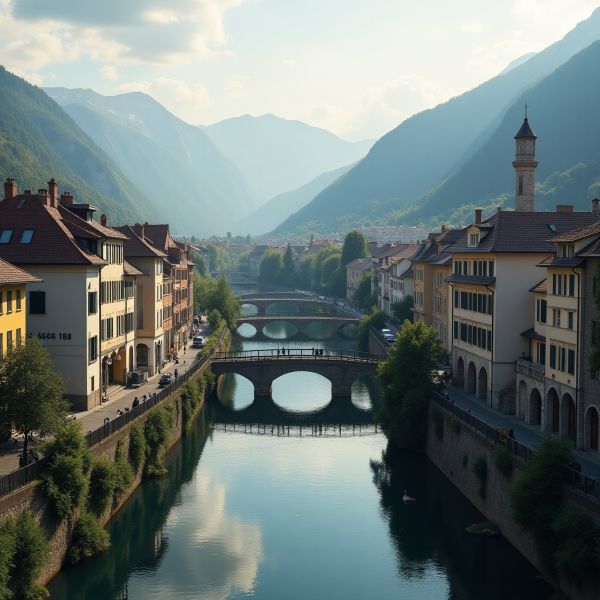Monday, May 26, 2025
Slovenia’s Thriving Tourism Industry Reflects Emerging Global Travel Dynamics
Recent statistics have shown that Slovenia has witnessed a notable surge in its international tourism sector during the initial four months of this year. This upward momentum underscores not only the country’s increasing allure as a travel destination but also mirrors broader trends of rejuvenation and expansion across the global travel landscape.
Domestic Tourism Slightly Declines as Foreign Visitor Numbers Rise
Data released by the national statistical office indicated that the number of foreign tourists arriving in Slovenia between January and April approached nine hundred fifty-three thousand, representing a 9.4 percent year-on-year increase. This impressive growth was paralleled by a rise in the number of overnight stays by international visitors, which climbed 6.8 percent to exceed two million two hundred fifty-five thousand nights. These figures reveal that visitors from abroad are not only coming in greater numbers but are also extending their stays, which is a positive sign for the local tourism ecosystem.
In contrast, domestic tourism experienced a modest downturn during the same period. The count of resident travelers fell by 0.8 percent to about four hundred thirty-five thousand, and their overnight stays dropped by 0.9 percent, totaling roughly one million two hundred thirty-three thousand nights. This decline highlights a divergence where international demand is gaining strength while local travel appears to be cooling off.
Italy, Croatia, and Austria Dominate Source Markets
When examining the origins of these international visitors, it emerged that the majority hailed from Italy, followed closely by travelers from Croatia and Austria. This distribution underscores Slovenia’s strategic position in Central Europe and its strong connections with neighboring countries, which serve as vital conduits for tourism inflows.
Consistent Growth Marks the Previous Year’s Performance
Reflecting on the previous year, Slovenia attracted approximately five million fifty thousand foreign tourists in 2024, marking an 8.5 percent increase compared to 2023. This steady climb in visitor numbers signifies Slovenia’s sustained competitiveness and appeal in a global market that remains fiercely contested among travel destinations.
Broader Travel Industry and Global Traveler Implications
Slovenia’s positive tourism trajectory offers valuable insights into evolving travel behaviors and industry trends:
Destinations situated near key regional hubs and boasting seamless cross-border accessibility, such as Slovenia’s adjacency to Italy, Croatia, and Austria, tend to reap benefits from heightened visitor traffic.The gap between rising international tourism and declining domestic travel may point to shifting traveler priorities, economic influences, or evolving travel confidence at the national level.Increasing overnight stays reflect stronger traveler confidence and a willingness to engage more deeply with local culture and experiences, which can stimulate growth in ancillary sectors including hospitality, culinary services, and local attractions.
This evolving landscape encourages tourism stakeholders globally to invest more in regional connectivity, foster cross-border collaborations, and innovate in providing tailored visitor experiences that cater to increasingly sophisticated and diverse traveler preferences.
Economic Opportunities and Sectoral Developments
The ongoing rise in international arrivals unlocks multiple economic avenues for Slovenia, with emphasis on:
Expanding hospitality infrastructure to meet growing demand and enhance service quality.Crafting targeted marketing campaigns aimed at priority markets, especially Italy, Croatia, and Austria, which are key drivers of visitor volume.Promoting sustainable tourism initiatives to balance growth with the preservation of Slovenia’s unique natural landscapes and cultural heritage.
From a global perspective, Slovenia’s performance exemplifies a successful approach to managing tourism recovery post-pandemic. The country’s ability to balance increasing foreign arrivals with the stabilization of domestic travel offers a model that other destinations might consider when designing strategies for resilient tourism development.
The unfolding tourism patterns in Slovenia, with rising international interest and cautious domestic travel shifts, provide a compelling snapshot of how regions can thrive amid changing global travel behaviors. These trends also signal a renewed optimism for the broader travel industry, emphasizing the importance of regional integration, sustainability, and adaptability to evolving market conditions.
